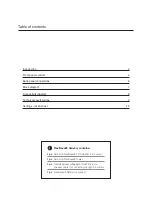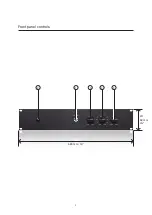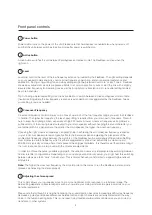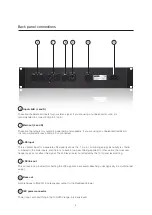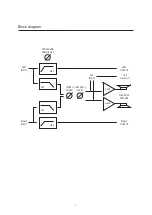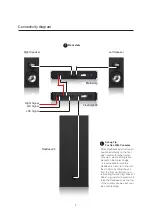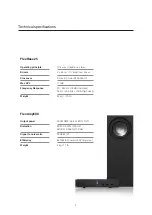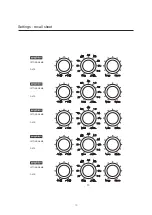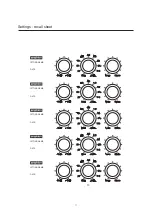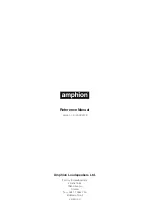
1
2
3
4
5
5
.
Power button
Power button turns on the power of the unit. Please note that hard bypass is enabled also when power is off,
and that the unit always switches to active mode after power is switched on.
Active button
Active button switches the unit between hard bypass and active mode. The FlexBase is active when the
light is on.
Level
Level dial controls the level of the low frequency extension provided by the FlexBase. The right setting depends
on your speaker model sensitivity, your room low frequency absorption, and your personal preference and
application. During song-writing, fun and vibey settings might be preferred over more “correct” ones. FlexBase
allows easy adjustment as work progresses. While it is common practice to write or start the mix with a slightly
elevated low frequency for mastering use as well as for optimal mix translation, a more neutral setting tends to
be more beneficial.
Tip for finding a balanced setting: Use the Active Button to switch between active and bypass mode to find a
(neutral) setting where the low frequency response is extended but not exaggerated by the FlexBase. Tweak
your setting to taste as needed.
Crossover Frequency
Crossover Frequency control allows you to choose how much of the low frequency range you want the FlexBase
to handle. The higher the frequency, the less heavy lifting is required from your main pair of speakers. This will
help to keep the midrange clean, especially at high SPL levels. A lower crossover frequency setting allows a
subtle add-on of the missing lowest octave(s) to your main speaker without changing the sound character you
are familiar with. As a general rule, the smaller the main speaker, the higher the crossover frequency.
Choosing the right crossover frequency can greatly help in achieving the smoothest low frequency response
in your room. As speaker placement greatly affects the low end response, adjusting the placement of the
problematic frequency range between the monitors or the FlexBase can be surprisingly efficient when battling
room modes (a certain frequency which is either exaggerated or almost lost, especially in smaller rooms).
60-300 Hz is typically an area where rooms present their biggest problems. It is therefore worth experimenting if
the room response can be improved with the crossover adjustments.
In order to achieve the purest possible signal path, the variable crossover is implemented by switching between
16 discrete filter configurations. Depending on your input signal and monitor setup, you might hear this switching
between steps as a faint “click” for each step. This is normal behaviour and similar to stepped high-end level
attenuators.
Note:
The higher the crossover frequency, the more important it becomes to run the FlexBase in stereo mode
(please see Adjusting the stereo spread).
Adjusting the stereo spread
This control allows you to gradually move from a more traditional mono response to a full stereo image. The
best setting depends on several aspects such as how wide your main pair stereo image is as well as on your
personal preference.
Please note that although it is true that localizing the sound direction becomes increasingly difficult as frequency
decreases, polarity and phase differences between left and right channels are certainly detected all the way
down to the human hearing limits. This is one reason why traditional subwoofers can deceive you and ruin mix
translation to other systems.
Front panel controls


